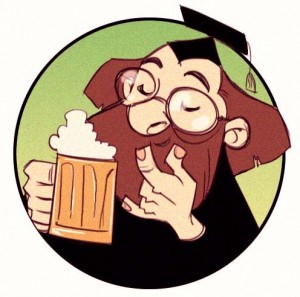 In my Beer 101 column this month, I start a two-part series looking at under-appreciated styles – beer that often get overlooked by beer aficionados (which you can read here).
In my Beer 101 column this month, I start a two-part series looking at under-appreciated styles – beer that often get overlooked by beer aficionados (which you can read here).
In my various beer travels and beer conversations, I find that certain styles get more love than others. IPAs are always big. Imperial anythings are a hit. I think stouts also get their share of attention. And don’t get me started on all the various new hybrids, resurrected historical styles and general Frankenstein beer.
It is all perfectly reasonable. These beer are new, interesting, complex and/or offer new kinds of tastes. But there are plenty of styles that can offer a quality quaff that sit at the back of the fridge. For some reason beer people opt for other things. I am never one to judge someone’s choices, but I do find the broader pattern interesting.
So, in the column I hightlight four styles that I think get unfairly overlooked at times (even by me, so I am not pointing fingers here).
The most obvious is good old pale lagers. I know, most beer fans got into craft beer to avoid pale lager. It has the rotten reputation of being boring and flavourless. Boring may be in the eye of the beholder, but they certainly are not flavourless. Sure, maybe in comparison to a Double IPA, but when standing on their own they can be quite expressive.
First, pale lagers are notoriously hard to make well, something we would be wise to remember more often. Second, it simply is not fair to judge a pale lager by the palate standards of a Belgian Ale. We need to respect pale lagers for what they are trying to be, crisp, fresh, clean with a delicate malt taste. Plus it is all about context for me. Sure, if I am looking for something to grab my attention during a tasting, a pale lager won’t fit the bill. But after mowing the lawn on a sunny Saturday? I will take that over an American IPA anyday.
I make a similar argument for Brown Ales. When I talk to bar owners and brewers, the brown ale is always one of the slowest sellers. I think because it suffers from not being overly anything – not too light, not too dark, not hoppy but not overly malty. It just is. But again, think about when it might be appreciated. I often like to start a session with a brown ale to get my palate up and running. More than a blonde beer, but not too much to get me tired.
The last two suggestions – hefeweizen and porter – may surprise many. I won’t rehash my whole rationale for them here, you can read the column for that. But I do think they suffer from lack of attention. I think hefeweizens are caught in the “wheat trap”. Wheats are seen by many as lightweight beer. As for porters, craft brewers may have saved the style from death but it is perceived too often as stout’s little sister, rather than for a stand alone dark ale with different flavour characteristics. More chocolate than coffee, more nutty than roasted.
There are others, and I will talk about some of them next month. In the meantime don’t feel like you have to change your ordering habits. But I do want to encourage to pause and become more conscious of why you make the choices you do. Are you unintentionally overlooking what could be a fantastic beer simply because it is not new, bold or complex?

June 26, 2015 at 12:51 PM
100% in agreement here, on porters especially. Whenever you read about the dark beers, it’s always about stouts, but Deschutes’ Black Butte Porter is one of the best beers I’ve ever had. And Phillips’ Longboat Chocolate Porter is a knockout.
Same for Cannery’s Naramata Nut Brown Ale. These styles definitely deserve more love.
The only problem is, I have cravings for IPAs – far more so than any other style – and I haven’t been able to escape them.
July 1, 2015 at 10:51 PM
From the first time I had a Scona Gold, I knew it was something special… and now it’s recently received accolades have affirmed my assertion. My top lawnmower beers this summer: Scona Gold by Alley Kat, Mana Wheat by Maui Brewing, and Dry Hopped Cider from Finn River (not a beer, but it’s got hops!)